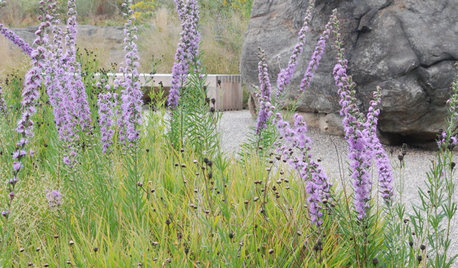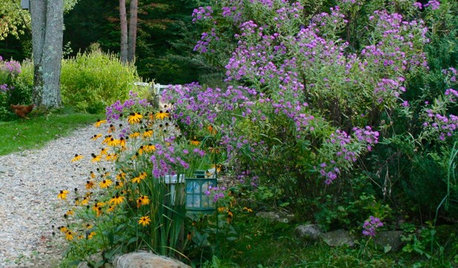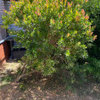Fanaticism and native plants
artiew
19 years ago
Related Stories

NATIVE PLANTSPlant These Fall-Flowering Natives in Early Summer for Pollinator Love
These 3 groups of plants will support masses of beneficial insects come autumn
Full Story
GARDENING GUIDES9 Clay-Busting Native Flowers for Summer Sun
These plants survive and even thrive in tough clay soil east of the Rocky Mountains
Full Story
GROUND COVERSNative Alternatives to English Ivy, Japanese Pachysandra and Periwinkle
These shade-loving ground covers are good for the environment and say something about where you are
Full Story
GARDENING GUIDES15 Native Flowers That Feed Native Bees
These perennials offer superfood to hundreds of bees and are gorgeous in their own right
Full Story
NATIVE PLANTSGreat Native Plant: Grow Wild Quinine for Its Unique Clusters of Blooms
Get connoisseur cred and unique blooms with this uncommon plant. Bonus assets: It’s low maintenance and drought tolerant
Full Story
WINTER GARDENING10 Native Wildflowers to Beautify Your Winter Garden
They stand strong in wind, feed wildlife and are easy to grow. But you may want to add these plants for their looks alone
Full Story
INSPIRING GARDENSNative Plants Inspire and Educate at NYC's Botanical Garden
Stroll through the new Native Plant Garden with us to get great ideas for plant choices and sustainability
Full Story
GARDENING GUIDESTop 10 Native Plants for the Northeast
For a low-maintenance, wildlife-friendly landscape, use native plants adapted to the climate and range of soils in the Northeast
Full Story
INSPIRING GARDENSNative Plants Bring 10 Southern California Front-Yard Gardens to Life
Rare plants, rain gardens and wildlife habitats are just a few of the features showcased on the 2016 Theodore Payne Native Plant Garden Tour
Full Story
GARDENING GUIDESHow to Find the Right Native Plants for Your Yard
Find plant maps, sale sites and guides that make going native in the garden easier than ever
Full StorySponsored
More Discussions




artiewOriginal Author
agnes_wa
Related Discussions
Native plants for drought - Native Plant Event - IL
Q
Planting sagebrush & other native plants
Q
Planting some native woodland plants
Q
Pseudo-natives
Q
Frank_S
gregaryb
gregaryb
artiewOriginal Author
agnes_wa
Formica
artiewOriginal Author
nathanhurst
mudlark
artiewOriginal Author
gardenlen
artiewOriginal Author
gardenlen
aus_tony
agnes_wa
Robert_NSW
mudlark
Treekanga
jan_cornelissen
nathanhurst
artiewOriginal Author
roysta
Robert_NSW
artiewOriginal Author
artiewOriginal Author
roysta
artiewOriginal Author
trancegemini_wa
Frank_S
agnes_wa
trancegemini_wa
Rose_Qld
artiewOriginal Author
nathanhurst
agnes_wa
trancegemini_wa
nathanhurst
Frank_S
roysta
ian_wa
wollemia_TC
artiewOriginal Author
Robert_NSW
flowersandthings
ian_wa
Robert_NSW
artiewOriginal Author
nathanhurst